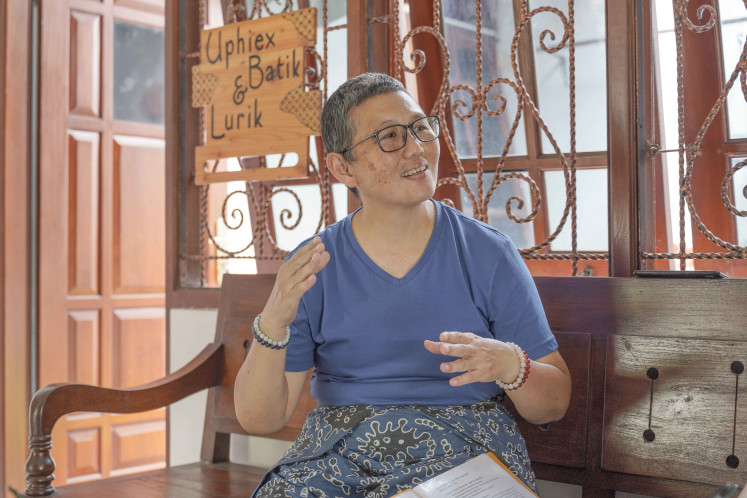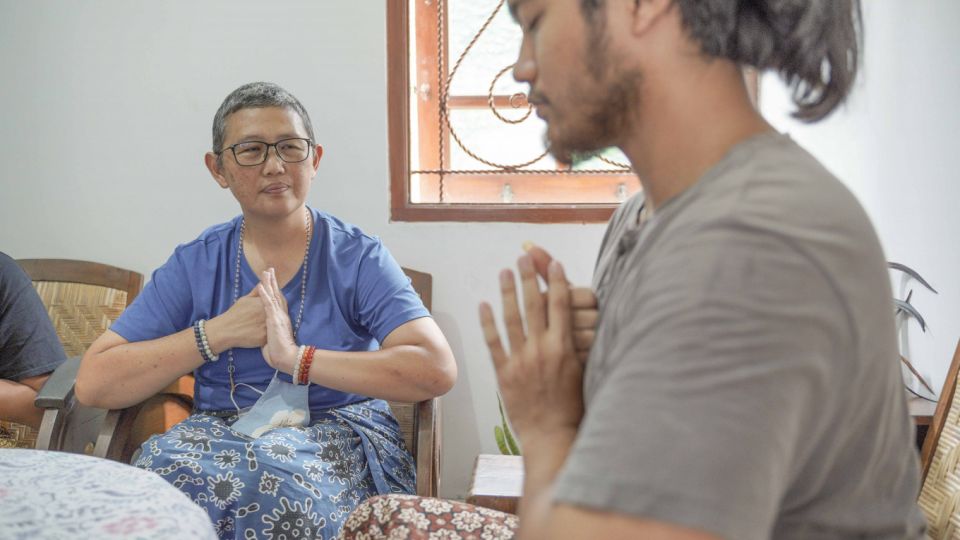April 6, 2022
JAKARTA – Practitioners of “applied kinesiology” claim it allows the body to speak about its traumas and memories. Medical experts call it a pseudoscience, but some Indonesians swear by it.
Letsu Vella remembers 2018 as the toughest year in her life. While she was trying to complete her master’s degree in Yogyakarta, her mother died after a short battle with cancer. This was all complicated by problems she had with people close to her.
“At the time, I felt that all these trials had come in succession, and I reached a point where I felt lost, numb and unmotivated,” the 30-year-old recalled.
Vella – as she prefers to be called – felt that something was wrong with her mental state, but she felt at first that she could handle it on her own.
After two years of facing her issues alone, Vella finally gave up and decided to seek professional help.
“Every time I relapsed, I felt like I just wanted to disappear from the world,” Vella said.
A friend recommended the Amazing Point of Balance (APoB) clinic, which claims to combine psychotherapy and a controversial practice known as “applied kinesiology” (AK).
Balance and criticism
APoB was founded by Chefira Lisanias, a 53-year-old psychologist who learned about AK in 2012.
“Healing with kinesiology is more holistic,” she said.
Chefira claimed that compared to other psychological approaches, the principle behind AK was very simple, namely that health could be seen from a person’s structural, chemical and mental balance. “Structural refers to things such as organs; chemistry is about nutrition, vitamins, sugar content; while mental is feelings, emotions, as well as the values you have,” she said. “If there is an emotional disturbance, for example, it means that everything must be balanced, improvement cannot be just emotion.”

Meet the founder: Chefira Lisa, the founder Amazing Point of Balance, learned about AK in 2012. (JP/Alfian Widi) (JP/Alfian Widi)
AK was developed by a chiropractor named George J. Goodheart in 1964. Goodheart sought to combine the science of kinesiology, which studies bodily movements and is often used in the field of sports, with various other disciplines. AK’s defenders claim that it is similar to a Newtonian law of motion, that “for every action in nature there is an equal and opposite reaction”. But the scientific community considers AK a pseudoscience. It has been widely criticized for promoting techniques and ideas based only on anecdotal experience. Various organizations have recommended staying away from the practice.
The body’s ‘story’
Unlike in psychological counseling, where patients typically verbalize their problems, AK practitioners such as Chefira claim they simply need to do a Manual Muscle Test (MMT) or Arm Pull-Down Test (APD) to diagnose a patient’s condition.
“The first time I was examined at APoB, Mrs. Lisa asked me a few questions, but the one who answered was not me, but my body instead. It’s always a yes-or-no question, and surprisingly, it tells a lot,” said Vella.
These purported tests are often performed by raising one of the patient’s hands and applying pressure while asking questions. If the hand remains strong, AK practitioners clam, the answer is “yes”, and if it goes limp, the answer is no. Believers claim every dysfunction in the body is associated with a weakness in a corresponding muscle.

Flexing: Manual Muscle Tests (MMTs) are used by AK practitioners, as they believe muscles can tell a lot about a patient’s physical and mental state. (JP/Alfian Widi) (JP/Alfian Widi)
“We use muscles as biofeedback. The body is sophisticated, and everything is connected,” said Chefira.
Health experts say this process can lead to false positive diagnoses because of the lack of measurable parameters. MMT is also used by clinical doctors, but only to determine the function of the muscle itself.
M. Ikhwan Zein, a physiology expert from Yogyakarta State University, said, “In medical terms, we know that the psychosomatic and physical and psychological are related. But if you want to know if someone is stressed or not, body reflexes cannot be the parameter. Such a method is too multifactorial.”
“If there is one method that claims to cure everything, it must be a hoax. Because all methods have their limits.”
Remembering?
Through therapy sessions at APoB, Vella believed she uncovered traumas she had experienced in her mother’s womb.
“I didn’t know I could remember these things, but I know when I was 9 months old in my mom’s womb, my mom and dad had a fight. My mom once wanted to abort me,” Vella said, adding that she “visualized” it at an AK therapy session with Chefira.
“It turns out that was one of the roots of my mental health problems. That’s why I often feel like disappearing,” she said. “All my life I’ve lived in survival mode because my body felt unwanted. It was angry and suffered.”
Chefira claims her application of MMT shortens the process of assessment, diagnosis and interpretation that usually attends clinical psychology.
But not all patients are convinced.
“I didn’t get much clinical discussion when diagnosed using MMT. I needed to know what was going on with my mental health theoretically, I needed to know the name of my disease” said a woman who opted to go by Sandy for this article, who in in 2018 went to APoB for a few sessions. “I also experienced some visualization at one session there, but it wasn’t that vivid. I saw the color red and something metallic in color,” she continued. The purported diagnosis was that Sandy had difficulties while being born and that this was the root of all her anxiety and mental health issues. “I don’t know how to put that in logical terms, and I needed more explanation, so I chose clinical psychotherapy instead,” she said.

Listening: Sound bath therapy is employed at Amazing Point of Balance. (JP/Alfian Widi) (JP/JP)
Unrecognized
Many major medical institutions object to the practice of AK. Bodies in the United States such as the American Academy of Allergy, Asthma and Immunology, the National Institute of Allergy and Infectious Disease and the American Cancer Society have issued official statements against the practice of AK.
In a 2009 statement, the American Cancer Society stated that “scientific evidence does not support the claim that applied kinesiology can diagnose or treat cancer or other illness”.
Even so, AK practitioners continue to multiply.
In Indonesia alone there is already an association of AK practitioners called the Indonesian Kinesiology Association (PEKSI), which has been recognized as a Health Ministry partner and as a member of the Association of Traditional Healers. This was noted in an official Health Ministry letter.
Lucia Peppy, the founder of the Wiloka Workshop, a clinical psychology practice, is sympathetic to AK.
“We in psychology always have challenges in understanding the patient’s situation. Maybe psychologists use AK to enrich the assessment process,” she said.
“Recently, there have been many new techniques that claim to be part of psychological practices. And in my opinion, as long as the psychologist who uses it knows what he or she is doing and where it is in a clinical psychological procedure, it can still be ethically accounted for,” said Lucia.
She added that it was important to remember that not all methods were based on proven psychological practices.
“There are many basic types – spiritual, religious and so on. It’s not fair if everything is really associated with psychology,” she said. Chefira, on her part, dismisses the criticism of her practice entirely. “Western medicine is based on the concept that the body is ‘dead’. So, for example, if you have a problem with your appendix, then the appendix is removed. In kinesiology, the body is alive, which means the body can repair itself, fight viruses and so on. So what is corrected is something that is bothering a person, for example by smoothing out electric currents in the body, anything that needs to be balanced again.” “Healing is one’s own responsibility. Kinesiology allows the body to repair itself. The key is balance,” she added.


